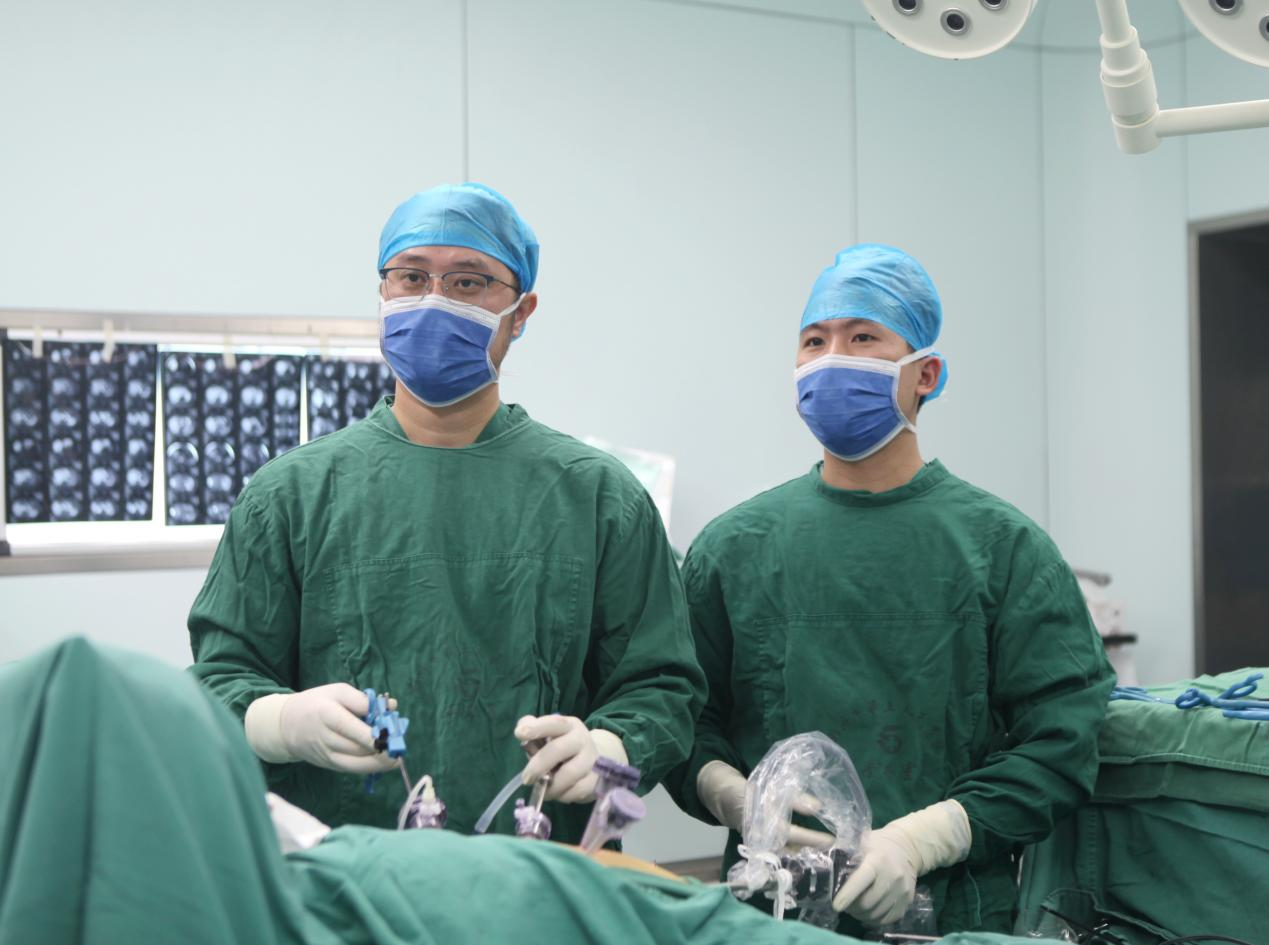Patient Hong accidentally fell down on an electric car 11 days ago, injuring his left knee, causing swelling and pain of the left knee joint and limited movement. No fracture was found during DR in the local area. MRI of the left knee joint showed that the anterior and posterior cruciate ligaments of the left knee were broken, the medial and lateral collateral ligaments were injured, and the patellar ligaments were injured.
After the diagnosis, the doctor suggested surgery, otherwise Mr. Hong might face the fate that his left knee joint could not walk. Mr. Hong was extremely anxious and worried that he might have to spend the rest of his life in a wheelchair. Mr. Hong has been to the Fifth People's Hospital of Ganzhou in the past. The medical technology and nursing services of the hospital made Mr. Hong particularly satisfied. In anxiety, Mr. Hong chose the Fifth People's Hospital of Ganzhou again and went to the Department of Orthopaedics of the hospital.
After detailed examination and preoperative evaluation, Mr. Hong underwent knee arthroscopy for reconstruction and repair of anterior and posterior cruciate ligament of left knee + meniscoplasty + repair of medial collateral ligament of left knee in hospital. Professor Hao Liang from the Second Affiliated Hospital of Nanchang University, a medical association unit of Ganzhou Fifth People's Hospital, was invited to guide the operation. The immediate effect after operation made Mr. Hong particularly satisfied.
In recent years, the Department of Orthopaedics of Ganzhou Fifth People's Hospital has rich clinical experience in arthroscopic surgery, which can widely carry out arthroscopic joint trauma reconstruction and repair, arthroscopic tuberculosis debridement and other operations.
Popular science:
Arthroscopic surgery: Is a minimally invasive operation, It has two functions of diagnosis and treatment at the same time, It inserts a lens metal tube with lighting device into the joint cavity through a small incision, enlarges the internal structure of the joint cavity on a monitor, observes the pathological changes and positions in the joint cavity, and at the same time carries out comprehensive examination and treatment of the damaged positions under TV monitoring, thus avoiding many joint incision operations. Widely used in the diagnosis and treatment of knee joint, shoulder joint, wrist joint, ankle joint and other joint diseases, including knee osteoarthritis, knee meniscus injury, anterior and posterior cruciate ligament injury, scapulohumeral periarthritis, rotator cuff injury and other diseases.
Advantages
1. The incision is small and beautiful, which can avoid the irritation symptoms caused by scars on the joint surface and moving parts in the late stage; It belongs to minimally invasive surgery with less pain and less postoperative reaction;
2. Extremities can be moved and used early after operation to avoid complications of long-term bed rest;
3. Short hospitalization time;
4. It basically does not affect the muscle structure around the joint, and early functional exercise can be carried out after operation to prevent disuse and complications caused by long-term joint fixation;
5. It can observe and examine intra-articular lesions in an almost physiological environment, which is called "putting eyes and fingers into joints", and can carry out dynamic examination on joints, thus improving the diagnostic ability.
6. Arthroscopy can perform operations that were difficult to complete in previous open operations.

